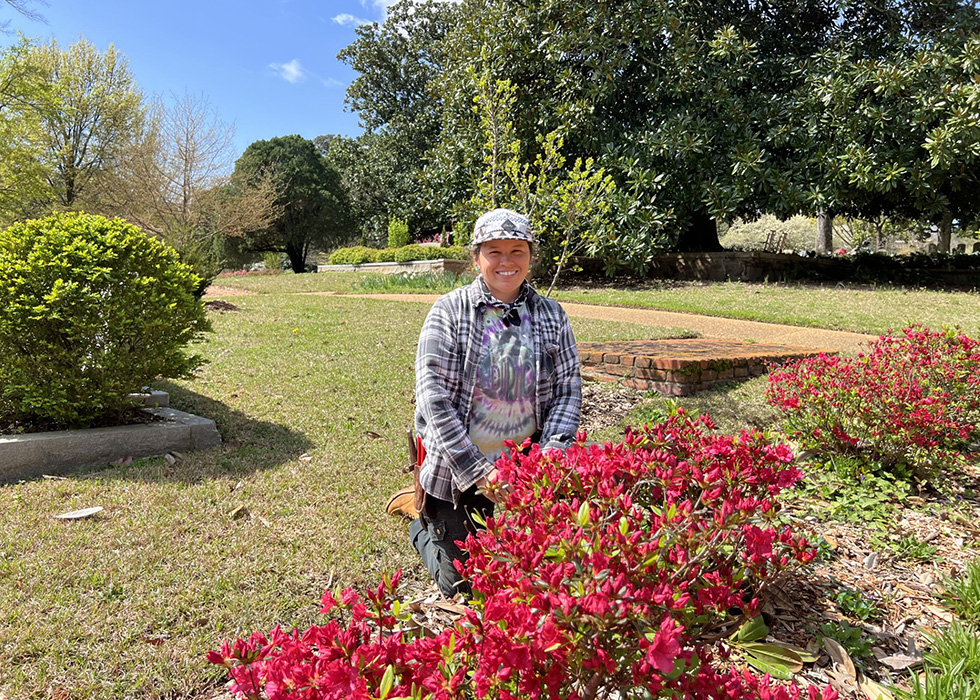
Oakland Autumn Garden Inspiration: 6 Easy Fall Bloomers
Autumn at Oakland Cemetery is a sight to behold. Colorful foliage and abundant blooms across its 48 acres can provide endless inspiration for the home landscape. These six plants thrive on Oakland’s grounds and are easily grown and can thrive for even the most inexperienced gardener.

Japanese anemones
The anemone, also known as windflower, bloom in early late summer - fall each year. The flowers, which range from pink to purple to white depending on the cultivar, attract bumblebees and other pollinators. Plant anemones in a partly sunny to sunny location. These flowers will spread happily via underground runners, but may take a year or two to establish themselves.

Aster
Many of the nearly two hundred species of asters are native to the United States and Canada, and you’ll find several of them blooming on Oakland’s grounds come autumn. Asters provide forage for bees and butterfly and some species play host to the pearl crescent butterfly. Seeds can provide food for wildlife in the winter. Asters like sun, but can tolerate partial sun. Once established, they’re draught tolerant.

Chrysanthemums
The garden mum is found in several locations at Oakland, often covered in butterflies. Not to be confused with the florist mums seen in stores, these garden mums were once very popular but fell out of favor and now can be hard to find. Also known as hardy mums, these perennials usually bloom in October and are great for mass plantings. Plant in full sun in an area with good drainage. Keep moist. Pinch stems to encourage a compact growth habit, but stop pinching by around July 4. Flowers range from white to yellow to pinky rust.

Rain Lilies
These easy to grow flowers are also known as Zephyr lilies. Some varieties, like Zephyranthes atamasca, are native to the Southeastern U.S. Plant bulbs an inch to two inches deep and about six inches apart in full to partial sun. The pink, yellow or white flowers only last a day or two and often appear after the rain. Rain lilies will naturalize without much care from the gardener.

Cosmos
The only annual in our roundup, these drought-tolerant, daisy-like flowers attract bees and butterflies galore and come in a variety of colors. Even though they’re annuals, don’t be surprised if you see some pop up from seed next year. Cosmos bloom from spring through fall in full sun. Deadhead to prolong the flowering season. Cosmos will bloom about three months after you plant the seeds; you can also buy plants from the nursery.

Goldenrod
This native perennial is often confused with the sneeze-inducing ragweed. Allergy sufferers need not avoid goldenrod, however. Attractive to native bees and honeybees, goldenrod blooms August through October. Plant in full to partial sun. Golden rod can grow to up to 5 feet tall, though there are plenty of lower-growing varieties. Goldenrod is drought resistant once established and spreads via rhizome.



